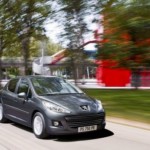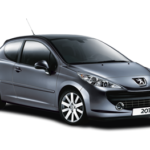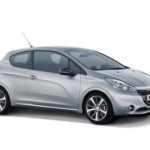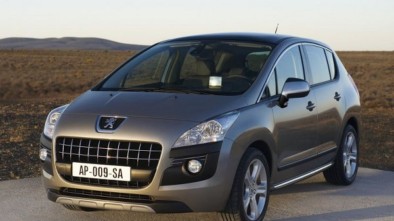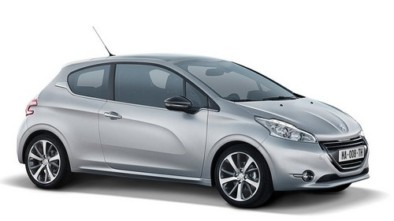Peugeot 207 2006 - 2012 - Used, advantages, disadvantages

Peugeot 207
The Peugeot 207 was manufactured from 2006 to 2012. He is the heir Peugeot 206.
The front grille of the Peugeot 207 is enriched with an accentuated air intake with sharpened, technologically advanced headlights almost 80 cm long. A clear difference between the versions is given by the fog lights, "classic" in the lower part of the bumper, ie "sports" edged with chrome.
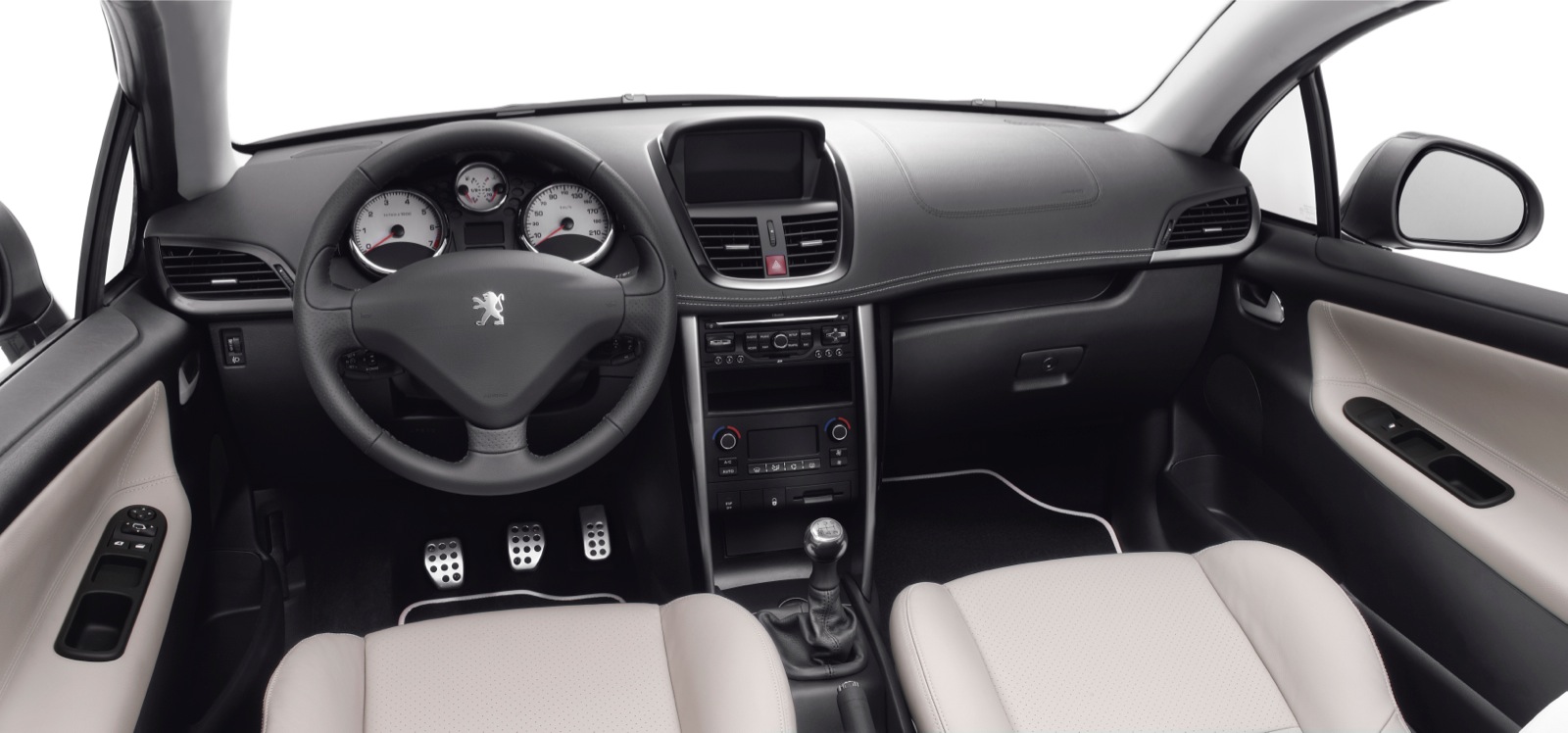
Peugeot 207
The front of the Peugeot 207 has an integrated dual system that limits the consequences of a collision with a pedestrian and facilitates vehicle repair.
The car comes with ESP (Electronic Stability Program) which provides anti-skid control, while the latest-generation stability control (CDS) is available through accessories or in series in all versions.
Extending the wheel track allows for better body grip and stability in a variety of dynamic situations.
The electric power steering adapts to different conditions and gives you a good driving feeling, both in city driving and outdoors.
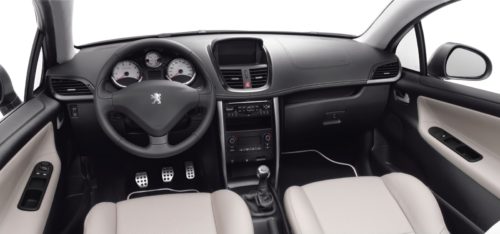
Peugeot 207
The Peugeot 207 is currently available as a three- or five-door hatchback and combined with six trim levels, and the available engines are three petrol (1.4 / 75 hp, 1.4 / 90 hp and 1.6 / 110 hp) and three diesel Hdi engines (1.4 / 68 Hp, 1.6 / 90 hp, 1.6 / 110 hp).
Fuel consumption ranges from 4.5 liters of 1.4 HDi te 1.6 HDi up to 7 l / 100 km for the 1.6 l V16 petrol variant.
In 2007, the Peugeot 207 CC was launched as a replacement for the 206 CC, with a retractable roof and available 1.6 Hdi or 1.6 Vti engines.
Advantages - Peugeot 207
- He's lying on the road
- Lots of accessories
- Low fuel consumption
- certainty
- The spaciousness of the front seats
Mane - Peugeot 207
- Poor sound insulation
- Spacious rear seats
- Trunk volume
- Loud gasoline engines
- Faulty thermometer error. It is reported that the engine is overheating, and since this is not actually happening, a thermometer probe is required
- The THP turbo gasoline engine often skips the gear belt out of phase, which can easily cause major engine problems. The problem is solved by replacing the belt. Models made by the end of 2010 are affected by this problem.
- For models equipped with 4 brake discs, loud braking sound occurs. The problem is usually solved by cleaning the clamps and brake calipers
- Intense interior wear, especially door handles and chrome accessories
- Problems with the power window (impulse, cancel)
- Turning off cruise control when driving, the problem is most often in the switch under the clutch
- Frequent warnings for airbag defects due to connectors between the elements of the safety system, or less frequently due to a belt-controlled switch
engines
The starting engine in the 207 is a 1,4-liter petrol with 73 hp. Its performance is insufficient for anything outside the city, and the consumption in practice is much higher than that declared by the manufacturer. If you are a little more nervous driver, you will drink almost 10 liters in the city. For a car that accelerates to 100 km / h in 14,5 seconds, it comes as a slap in the face to the petrol station, so the Peugeot 207 with this engine should only be bought if an immoral offer is obtained.
Slightly more enthusiastic is the 1.4 16V VTi with 95 hp with a liter and lower consumption. Its performance is good, but the owners complain that it knows how to turn itself off. Not happy is the 1.6 16V VTi with 120 hp (4,8 / 6,1 / 8,4 l / 100 km) that is also installed in the Mini, because it also likes to mysteriously trot and turn off. It is otherwise a good engine because it offers low consumption and solid performance, so if it sounds good and if the owner says he had no problems (and if you believe him), you can dare to buy a well-preserved copy. Clearly, the best performance option is the 1.6 THP with turbo and 150 hp (5,6 / 7,0 / 9,3 l / 100 km).
It consumes twice as much power as the initial 1.4, or less than 10 liters in the city, and only a few copies sometimes have a problem with the timing chain. In short, when buying a petrol Peugeot 207, the classic precautions are worth it: do not take the first year of engine introduction and stick to copies that were maintained exclusively in authorized services because their frequent software upgrades and service actions probably solve their problems forever. With HDI engines it’s a lot easier. The initial 1.4 HDI is considered too weak by some because it has only 68 hp and 160 Nm, but it is a real spark that will be gentle according to the family budget.
It does not break down, it pulls almost 170 km / h and lazily reaches 15,5 km / h in 100 seconds. But that’s why it can consume 3,8 liters outdoors, while in the city it drinks up to 6 liters. The more powerful 1.6 HDI models have 90 hp and 109 hp, respectively, and offer much more serious performance. The weaker one consumes exactly the same as the 1.4 HDI. Its disadvantage is a slightly more sensitive turbo, which likes to fail because of the filter, or sponge at the entrance to the turbo. Oil changes at 10.000 km and turbo service are enough for its long life. The more powerful 1.6 HDI with 109 hp is even more reliable and two deciliters more wasteful.
What are the most common Peugeot 207 breakdowns and how to solve them?
ALL MODELS
PROBLEM - Water enters the front legroom. The sound of water is heard when accelerating and braking.
CAUSE - Blocked exhaust pipe for water in the air conditioner chamber.
REPAIR - Remove and discard the left chamber exhaust pipe, remove the right chamber exhaust pipe. Modify the water outlet pipe by cutting off the end and leaving a through hole.
ALL MODELS
PROBLEM - Shivering in 1st gear driving with low throttle engine.
CAUSE - Faulty engine operation control parameters, faulty transmission and engine mounts.
REPAIR - Check and adjust engine operation control parameters using appropriate diagnostic equipment. Check transmission and engine mounts, replace defective if necessary.
ALL MODELS
PROBLEM - The steering wheel pulls to the left or right, noise from the front suspension.
CAUSE - Lubricate the rear shock absorber upper bearing bearing.
REPAIR - Remove the rear shock absorber upper bearing bearing, clean of grease and refit.
Peugeot 207 1.6 HDi
PROBLEM - Turbocharger oil leak, power loss, whistling sound.
CAUSE - Check the suction pipe for cracks.
REPAIR - Replace the suction pipe.
Revoke
Recommendation of similar texts:

Hi there, I am Mladen and I am an auto enthusiast. I started this blog years ago to help like minded people share information about latest cars, car servicing ideas, used car info, exotic cars, and auto technology. You will find helpful articles and videos on a wide variety of cars - Audi, Mercedes, Toyota, Porsche, Volvo, BMW and much more. Ping us if you have anything cool to share on latest cars or on how to make older cars more efficient, or just want to say hi!

